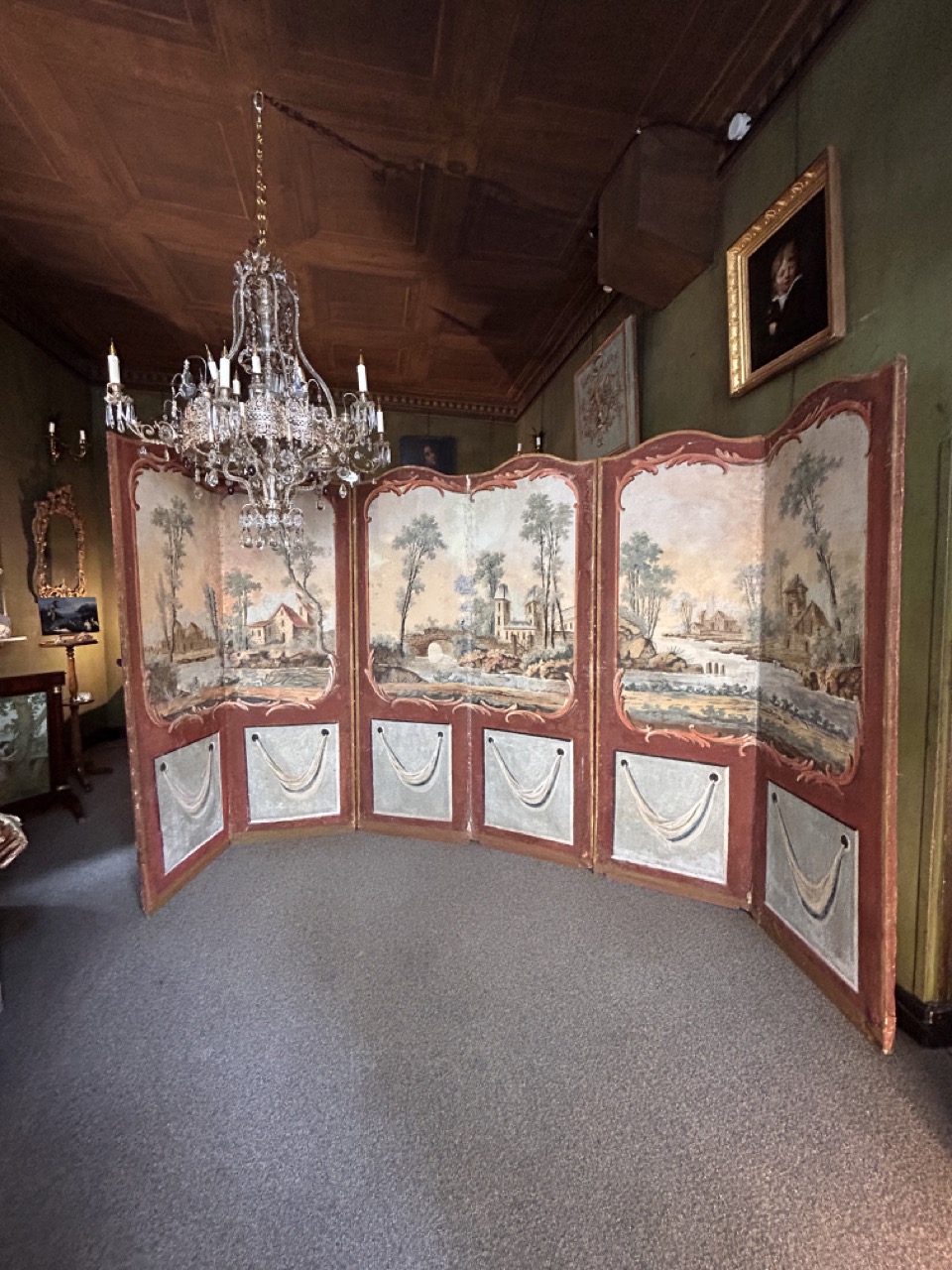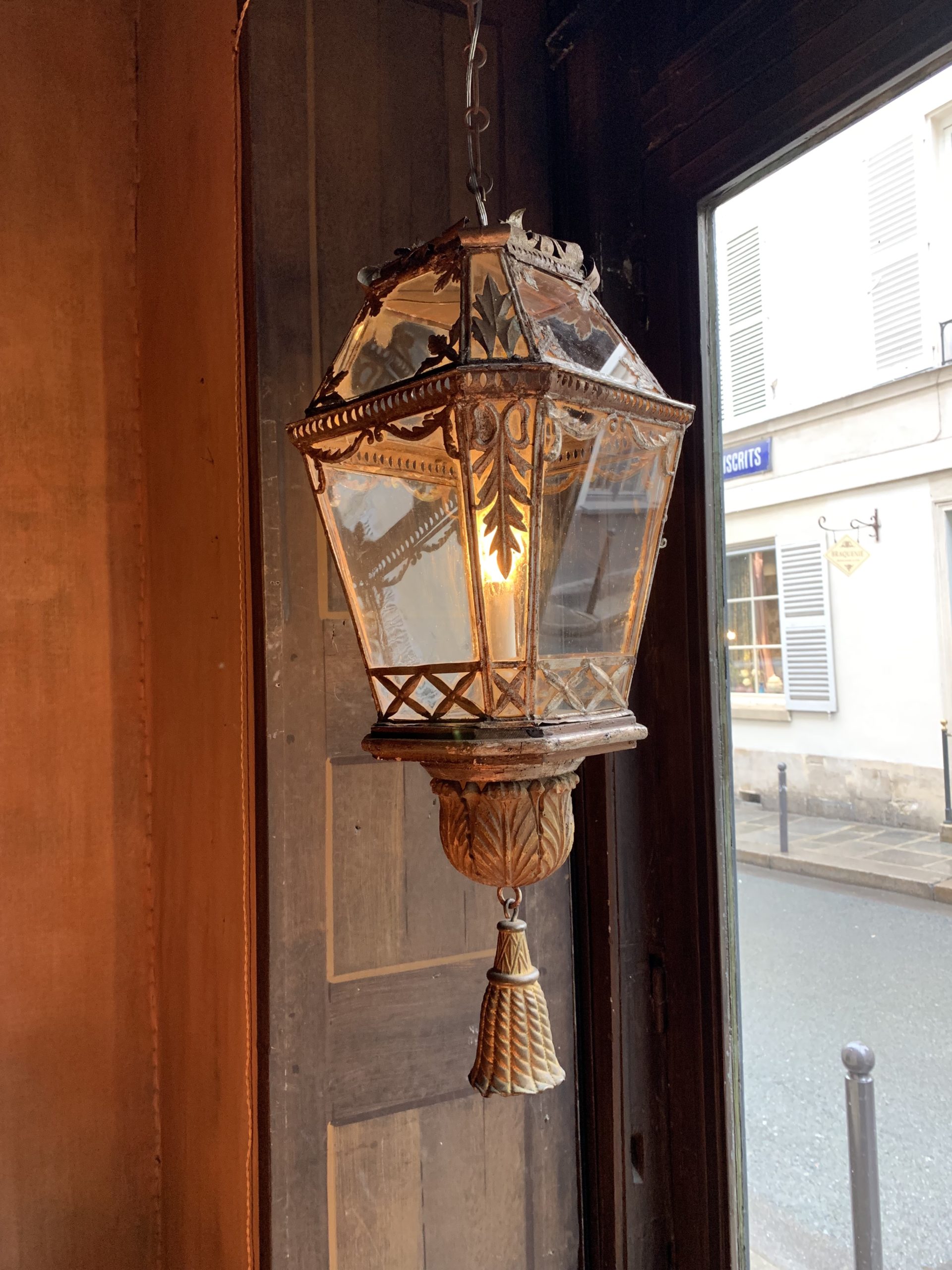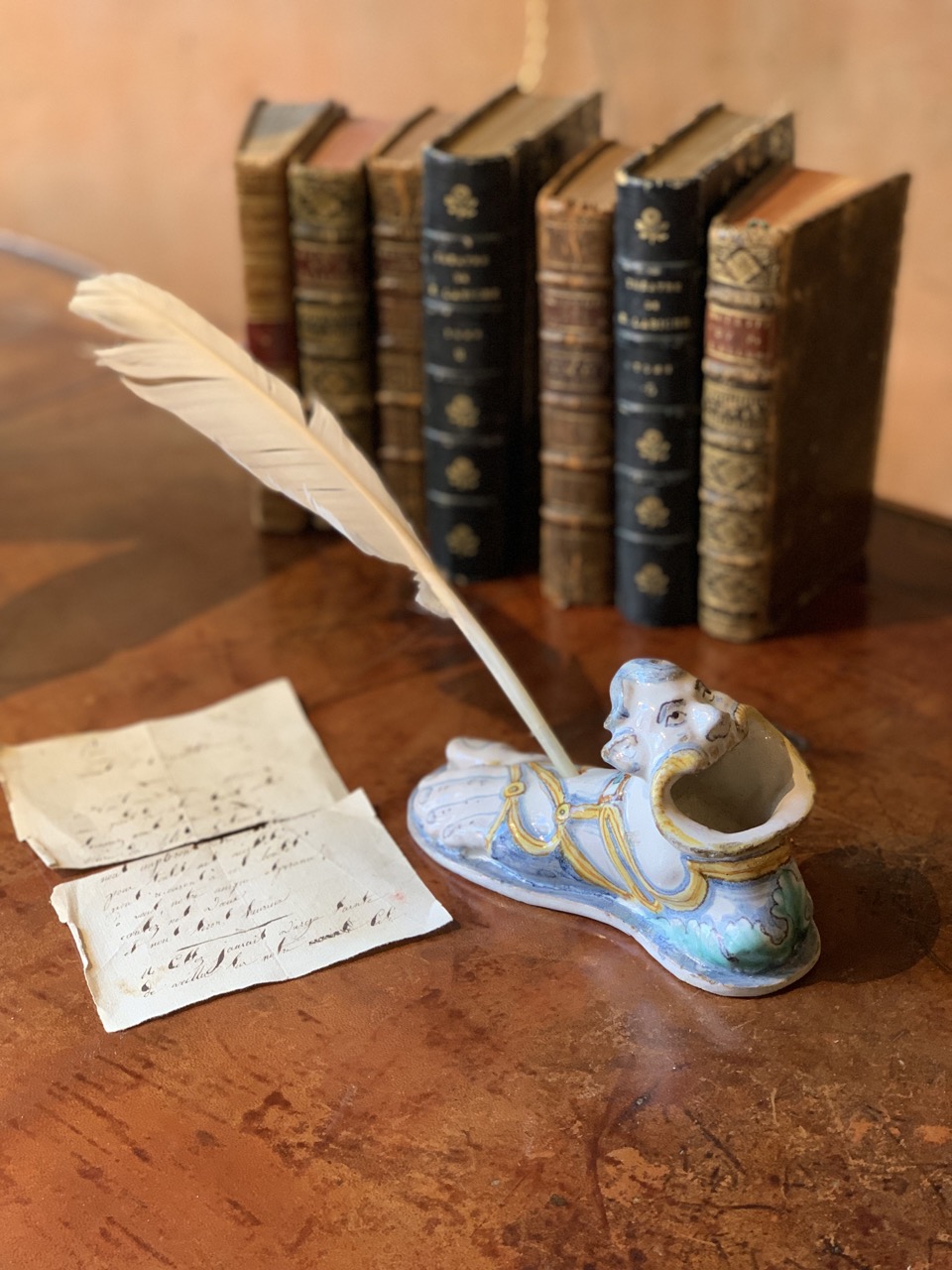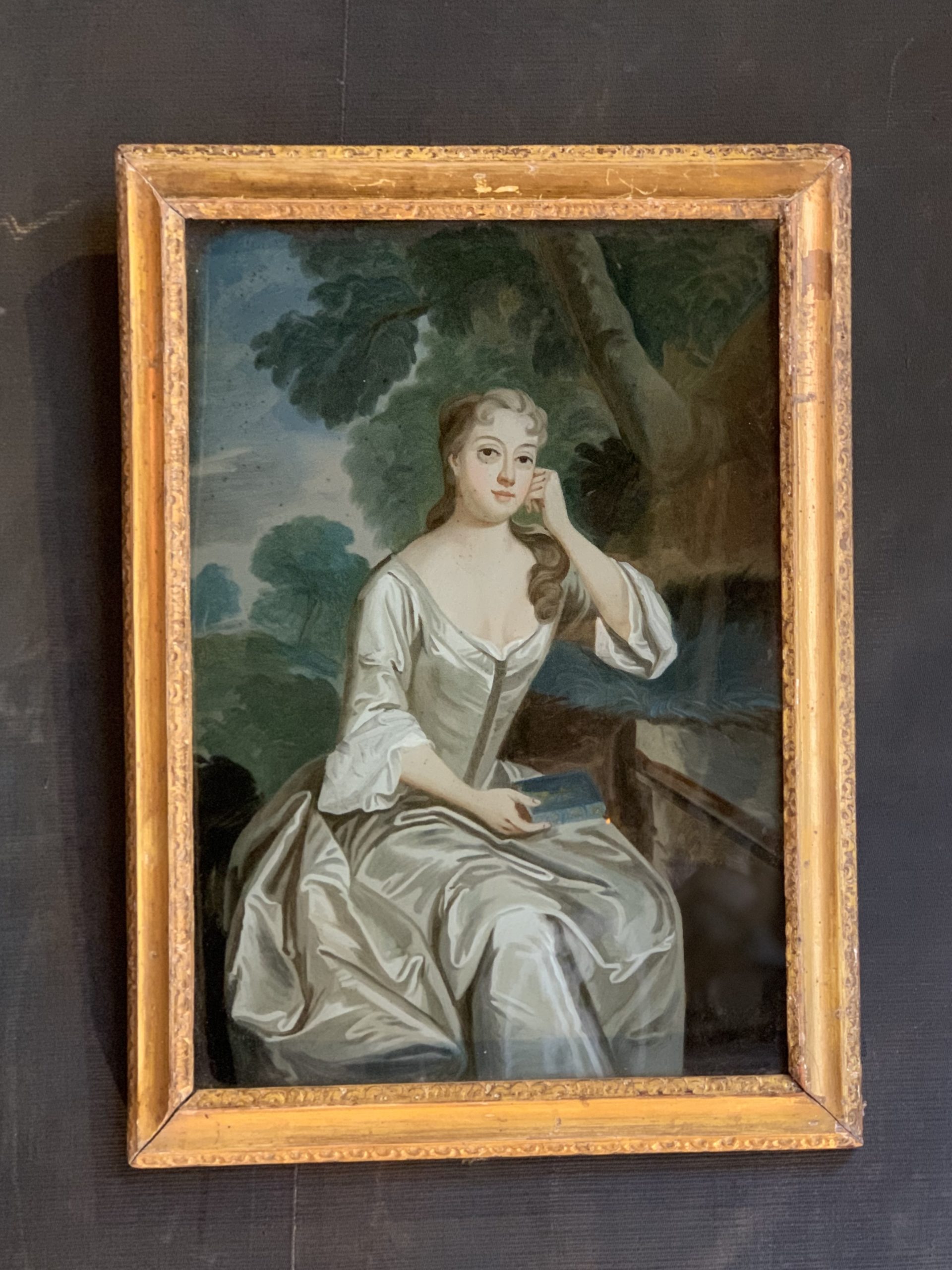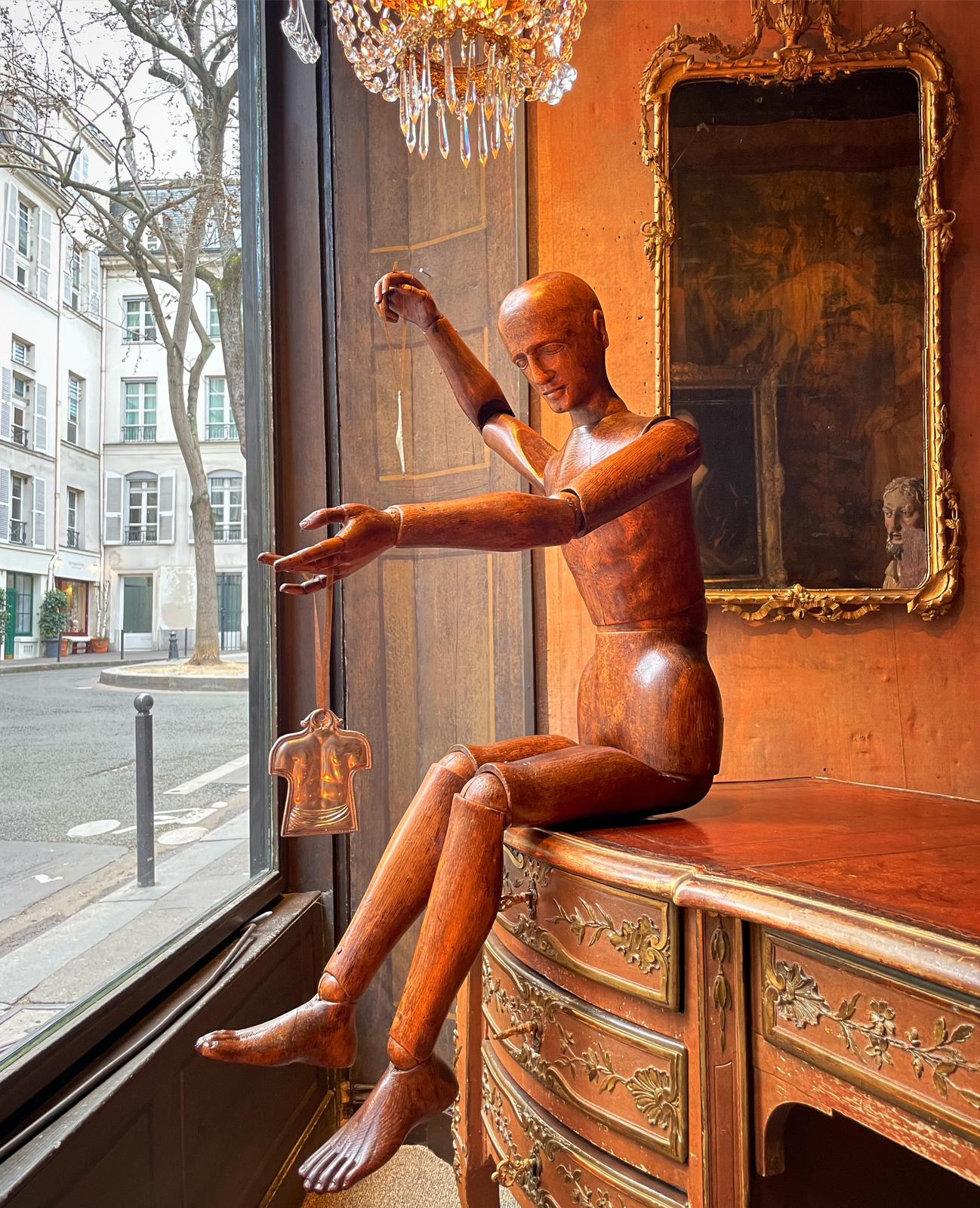Sinuous console on three sides, the top is red lacquered, the belt is in an eventful shape with heightening and cut out with gold festoons, 4 arched feet
Painting under glass is a difficult artistic technique that is executed directly on a sheet of glass. The glass supports the paint like a canvas. Thus the glass serves both as a support and as a protective varnish. It is a “cold” painting technique so the process does not require baking. The pigment is bound to the glass by an oily vehicle most often based on varnish.
Painting under glass is a difficult artistic technique that is executed directly on a sheet of glass. The glass supports the paint like a canvas. Thus the glass serves both as a support and as a protective varnish. It is a “cold” painting technique so the process does not require baking.
Magnificent screen in painted canvas, mounted with six leaves, with a total length of 384 cm deployed.
Pair of polychrome wrought iron sconces.
18th century
Italy
Elongated shape lantern in cut metal decorated with cut sides, opening to a door, with acanthus leaves in consoles and the crown, bottom part carved in wood and finished with a brass pompom.
18th century
Italy
Rare polychrome majolica inkwell in the shape of a foot with a Roman shoe.
Late XVI century
Deruta, Italy
The pair of neoclassical wall lights,
chiseled gilded bronze structure with crystal pendants.
XIX century
Italy
Painting under glass is a difficult artistic technique that is executed directly on a sheet of glass.
The glass supports the paint like a canvas. Thus the glass serves both as a support and as a protective varnish. It is a “cold” painting technique so the process does not require baking.
“Pure Greek beauty, supple and dignified (…) who gazes with calm indifference at the crowds who gaze at him speechless.”




